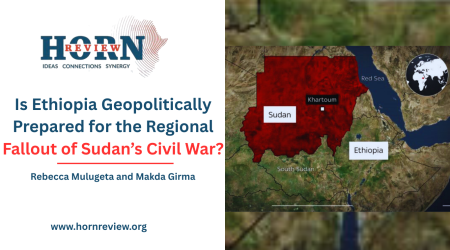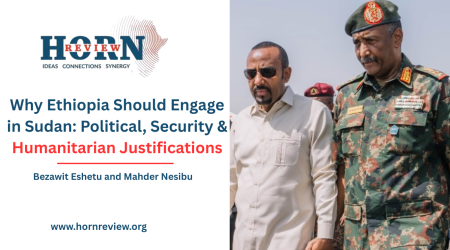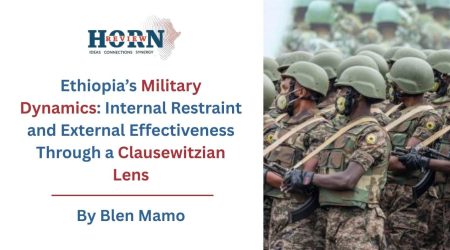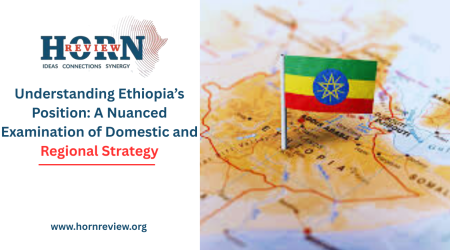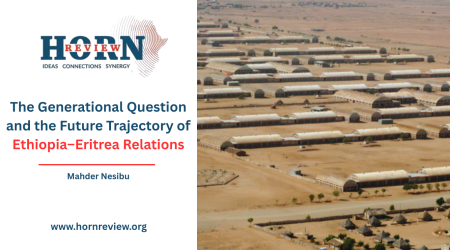
22
Aug
Geography and Diplomacy: Ethiopia’s Multilateral Pursuit of the Sea
Geography is immutable, but diplomacy reshapes how states live with its burdens. For landlocked countries, this is not an abstraction but a permanent constraint, one that ties economic vitality and national security to the goodwill of neighbours. Ethiopia, the most populous landlocked country in the world, has long carried this reality with unusual weight. Its dependence on Djibouti for over ninety percent of trade has been both a lifeline and a liability, binding its growth to a single corridor vulnerable to political, financial, and infrastructural strain.
The Third Conference on Landlocked Developing Countries, held in Turkmenistan earlier this month, provided a stage on which Ethiopia could reposition this dilemma. By framing sea access not as a unilateral demand but as part of a global inequity shared by thirty-two states, Addis Ababa sought to elevate the debate beyond regional quarrels. Its call for “equal maritime rights” was an attempt to inscribe Ethiopia’s national necessity into the broader architecture of international norms. In doing so, Ethiopia signalled that the issue is not merely about corridors and ports, but about equity, security, and inclusion in the global economy.
This effort is reinforced by a steady accumulation of diplomatic recognition. Belarus, a fellow landlocked state, has lent its endorsement. France has acknowledged Ethiopia’s developmental need for diversified maritime access. The United Arab Emirates has gone further, backing Ethiopia’s position as part of a broader partnership that extends into infrastructure, finance, and security cooperation. Russia, meanwhile, has expressed support by assisting in the revival of Ethiopia’s navy—a symbolic but significant gesture, situating Addis Ababa’s maritime aspiration within a wider geopolitical alignment. These gestures do not solve the logistical problem directly, but they accumulate into a form of legitimacy that strengthens Ethiopia’s case in multilateral forums.
Alliance-building is therefore central to Ethiopia’s maritime diplomacy. The strategy is less about extracting concessions from a reluctant neighbor than about embedding its claim in the language of collective development. Each external endorsement, whether symbolic or material, contributes to shifting the perception of Ethiopia’s quest from opportunism to necessity. The more this recognition grows, particularly from influential actors, the more difficult it becomes to dismiss Ethiopia’s maritime agenda as a regional quarrel. Instead, it emerges as a shared concern for stability and equitable growth in the Horn of Africa.
The challenge lies in transforming recognition into durable frameworks. Diplomatic sympathy, however valuable, must translate into institutional arrangements that reduce dependency on single corridors and distribute costs and benefits more evenly. Ethiopia’s investments in rail, dry ports, and cross-border infrastructure have laid a foundation, but sustainable solutions will require cooperative mechanisms that treat maritime access as a public good rather than a privilege to be bargained. In this sense, Ethiopia’s appeal to the LLDC framework is not rhetorical flourish—it is a bid to universalize its struggle and anchor it in multilateral commitments that endure beyond political cycles.
What is at stake is more than Ethiopia’s economic resilience. A cooperative resolution would set precedent for how geography’s inequities can be managed without confrontation. A failure, by contrast, risks deepening regional mistrust, reinforcing patterns of dependency, and forcing Ethiopia toward unilateral alternatives that destabilize the Horn. The balance between those paths will depend on whether alliance-building can mature into structured agreements that bind recognition to practice.
Ethiopia’s diplomacy is thus not only about securing an outlet to the sea but about redefining the rules by which landlocked states negotiate their place in the international system. Its approach—anchored in multilateral forums, amplified by external recognition, and supported by visible investment—illustrates how necessity can be turned into leverage. Geography cannot be altered, but through alliance and institutional innovation, its consequences can be reshaped. For Ethiopia, the task is to ensure that its maritime aspiration becomes not a source of perpetual contestation, but a model for cooperative adaptation in a world where borders still determine destiny.
By Sina Yigzaw and Mahder Nesibu, Researchers, Horn Review
References
- United Nations Development Programme. (2025, July 23). UNDP at the third UN Conference on Landlocked Developing Countries (LLDC3). UNDP.
- Ethiopian News Agency. (2025, August 6). Ethiopia urges for introduction of paradigm shifting approach to ensure equal maritime rights of LLDCs. ENA English.
- Fana News. (2025, August 6). Ethiopia calls for equal maritime rights and paradigm shift in global support for landlocked nations. Fanamc.
- Faisal Ali. (2024, January 2). Somalia vows to defend sovereignty after Ethiopia-Somaliland deal. The Guardian.

